Impacts of Certain Meteorological Factors on Atmospheric NO2 Concentrations during COVID-19 Lockdown in 2020 in Wuhan, China
Abstract
1. Introduction
2. Data and Methods
2.1. NO2 Data Obtained from Ozone Monitoring Instrument (OMI)
2.2. NO2 Data Obtained from Ground Monitoring Stations
2.3. Meteorological Data
2.4. The RFR Model
2.5. Model Verification
3. Results and Discussion
3.1. Mean Annual Distribution of the Tropospheric NO2 Column Concentrations during 2012~2020
3.2. Changes in Tropospheric and Ground NO2 Column Concentrations during Lockdown
3.3. Impact of Natural Factors on Ground and Tropospheric NO2 Concentrations
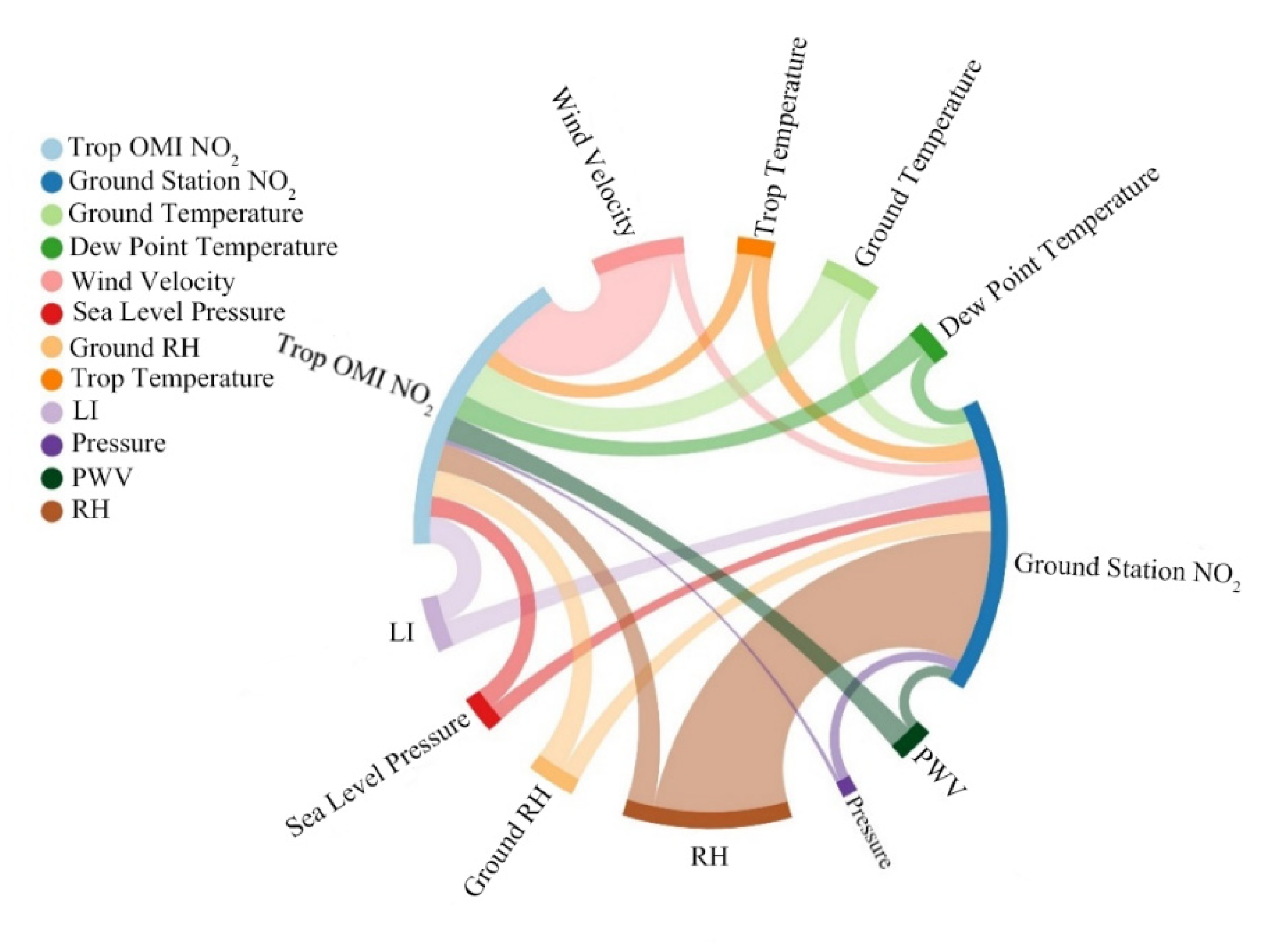
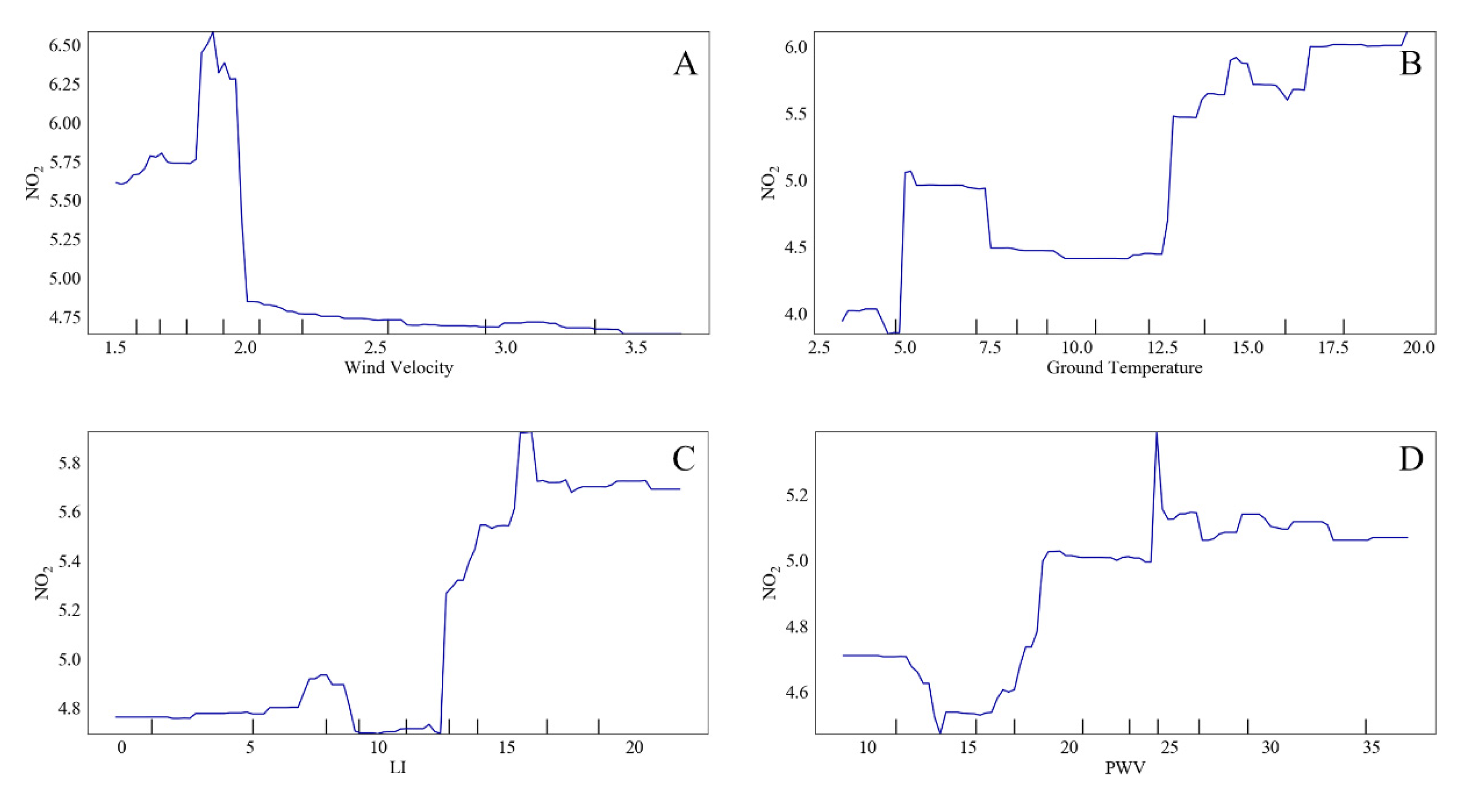

3.3.1. Wind Velocity
3.3.2. Temperature
3.3.3. Lifted Index
3.3.4. Precipitable Water Volume
3.3.5. Relative Humidity
4. Conclusions
Author Contributions
Funding
Institutional Review Board Statement
Informed Consent Statement
Data Availability Statement
Conflicts of Interest
References
- Carmona-Cabezas, R.; Gómez-Gómez, J.; de Ravé, E.G.; Jiménez-Hornero, F.J. Checking complex networks indicators in search of singular episodes of the photochemical smog. Chemosphere 2019, 241, 125085. [Google Scholar] [CrossRef] [PubMed]
- Fan, H.; Zhao, C.; Yang, Y. A comprehensive analysis of the spatio-temporal variation of urban air pollution in China during 2014–2018. Atmos. Environ. 2019, 220, 117066. [Google Scholar] [CrossRef]
- Fathabadi, A.; Seyedian, S.M.; Malekian, A. Comparison of Bayesian, k-Nearest Neighbor and Gaussian process regression methods for quantifying uncertainty of suspended sediment concentration prediction. Sci. Total Environ. 2021, 818, 151760. [Google Scholar] [CrossRef] [PubMed]
- Meng, K.; Xu, X.; Cheng, X.; Xu, X.; Qu, X.; Zhu, W.; Ma, C.; Yang, Y.; Zhao, Y. Spatio-temporal variations in SO2 and NO2 emissions caused by heating over the Beijing-Tianjin-Hebei Region constrained by an adaptive nudging method with OMI data. Sci. Total. Environ. 2018, 642, 543–552. [Google Scholar] [CrossRef] [PubMed]
- Shen, Y.; Jiang, F.; Feng, S.; Zheng, Y.; Cai, Z.; Lyu, X. Impact of weather and emission changes on NO2 concentrations in China during 2014–2019. Environ. Pollut. 2020, 269, 116163. [Google Scholar] [CrossRef]
- Pan, A.; Liu, L.; Wang, C.; Guo, H.; Hao, X.; Wang, Q.; Huang, J.; He, N.; Yu, H.; Lin, X.; et al. Association of public health interventions with the epidemiology of the COVID-19 outbreak in Wuhan, China. JAMA 2020, 323, 1915–1923. [Google Scholar] [CrossRef]
- Baldasano, J.M. COVID-19 lockdown effects on air quality by NO2 in the cities of Barcelona and Madrid (Spain). Sci. Total. Environ. 2020, 741, 140353. [Google Scholar] [CrossRef]
- Collivignarelli, M.C.; Abbà, A.; Bertanza, G.; Pedrazzani, R.; Ricciardi, P.; Miino, M.C. Lockdown for CoViD-2019 in Milan: What are the effects on air quality? Sci. Total. Environ. 2020, 732, 139280. [Google Scholar] [CrossRef]
- Hashim, B.M.; Al-Naseri, S.K.; Al-Maliki, A.; Al-Ansari, N. Impact of COVID-19 lockdown on NO2, O3, PM2.5 and PM10 concentrations and assessing air quality changes in Baghdad, Iraq. Sci. Total Environ. 2021, 754, 141978. [Google Scholar] [CrossRef]
- Laughner, J.L.; Neu, J.L.; Schimel, D.; Wennberg, P.O.; Barsanti, K.; Bowman, K.W.; Chatterjee, A.; Croes, B.E.; Fitzmaurice, H.L.; Henze, D.K.; et al. Societal shifts due to COVID-19 reveal large-scale complexities and feedbacks between atmospheric chemistry and climate change. Proc. Natl. Acad. Sci. USA 2021, 118, 2109481118. [Google Scholar] [CrossRef]
- Krotkov, N.A. OMI/Aura NO2 Cloud-Screened Total and Tropospheric Column Daily L3 Global 0.25deg Lat/Lon Grid; NASA Goddard Space Flight Center: Greenbelt, MD, USA, 2013. [Google Scholar] [CrossRef]
- Breiman, L. Random forests. Mach. Learn. 2001, 45, 5–32. [Google Scholar] [CrossRef]
- Probst, P.; Wright, M.N.; Boulesteix, A. Hyperparameters and tuning strategies for random forest. WIREs Data Min. Knowl. Discov. 2019, 9, e1301. [Google Scholar] [CrossRef]
- Ding, J.; van der A, R.J.; Eskes, H.J.; Mijling, B.; Stavrakou, T.; van Geffen, J.H.G.M.; Veefkind, J.P. NOx Emissions Reduction and Rebound in China Due to the COVID-19 Crisis. Geophys. Res. Lett. 2020, 47, e2020GL089912. [Google Scholar] [CrossRef]
- Elminir, H.K. Dependence of urban air pollutants on meteorology. Sci. Total. Environ. 2005, 350, 225–237. [Google Scholar] [CrossRef] [PubMed]
- Kalbarczyk, R.; Kalbarczyk, E. Influence of meteorological conditions on the concentration of NO2 and NOx in northwest Poland in relation to wind direction. Ann. Wars. Univ. Life Sci.—SGGW. Land Reclam. 2007, 38, 81–94. [Google Scholar] [CrossRef]
- Abdul-Wahab, S.; Chan, K.; Ahmadi, L.; Elkamel, A. Impact of geophysical and meteorological conditions on the dispersion of NO2 in Canada. Air Qual. Atmos. Health 2013, 7, 113–129. [Google Scholar] [CrossRef]
- Nkundabose, J.P. Establishing Relationship between Meteorological Parameters and Criteria Air Pollutants Concentration in Delhi. Int. J. Sci. Res. Methodol. Hum. 2020, 15, 30–44. [Google Scholar]
- Ma, T.; Duan, F.; He, K.; Qin, Y.; Tong, D.; Geng, G.; Liu, X.; Li, H.; Yang, S.; Ye, S.; et al. Air pollution characteristics and their relationship with emissions and meteorology in the Yangtze River Delta region during 2014–2016. J. Environ. Sci. 2019, 83, 8–20. [Google Scholar] [CrossRef]
- van Zomeren, J.; van Delden, A. Vertically integrated moisture flux convergence as a predictor of thunderstorms. Atmos. Res. 2007, 83, 435–445. [Google Scholar] [CrossRef]
- Li, L.; Qian, J.; Ou, C.-Q.; Zhou, Y.-X.; Guo, C.; Guo, Y. Spatial and temporal analysis of Air Pollution Index and its timescale-dependent relationship with meteorological factors in Guangzhou, China, 2001–2011. Environ. Pollut. 2014, 190, 75–81. [Google Scholar] [CrossRef]
- Zhang, H.; Wang, Y.; Hu, J.; Ying, Q.; Hu, X.-M. Relationships between meteorological parameters and criteria air pollutants in three megacities in China. Environ. Res. 2015, 140, 242–254. [Google Scholar] [CrossRef] [PubMed]
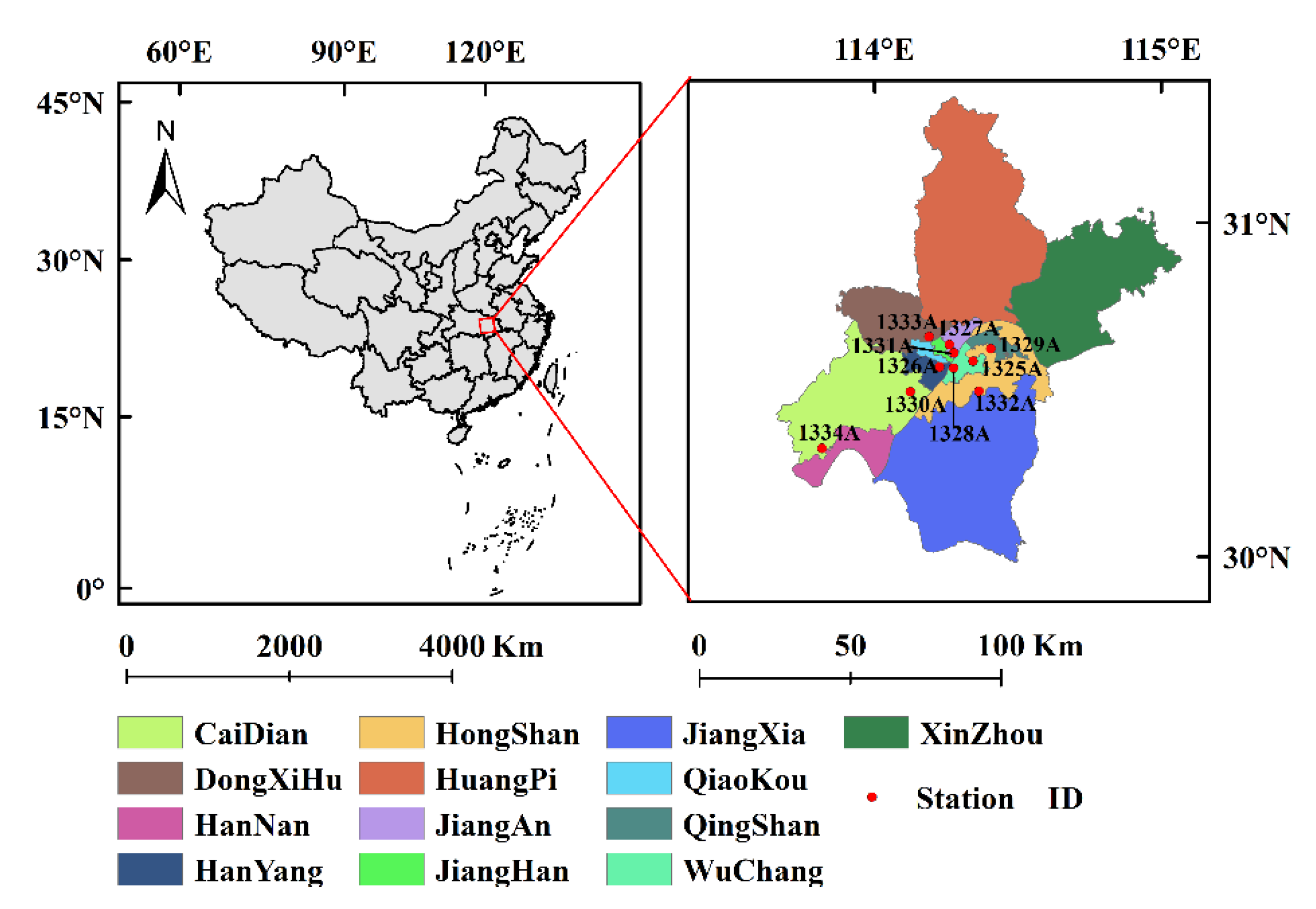
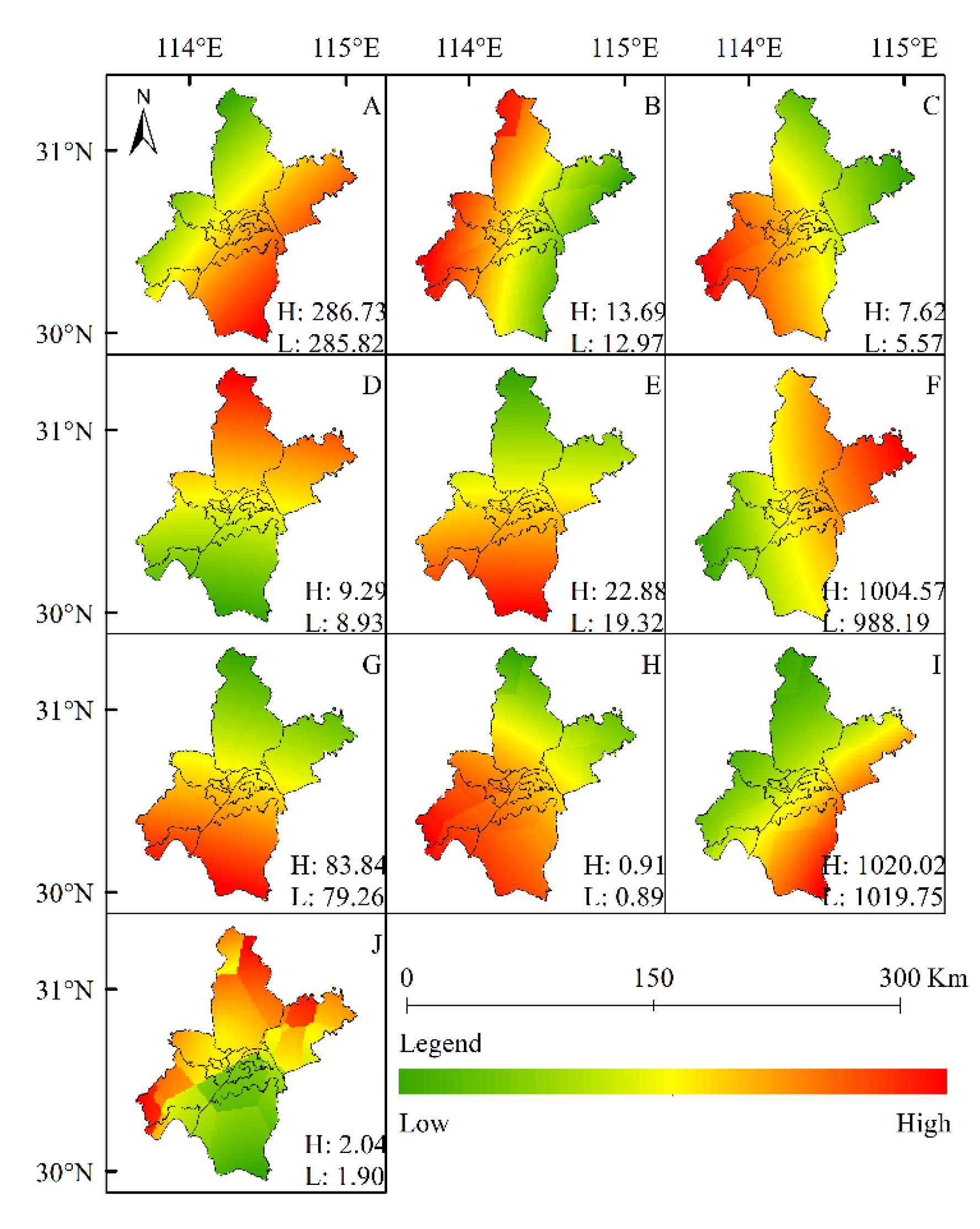
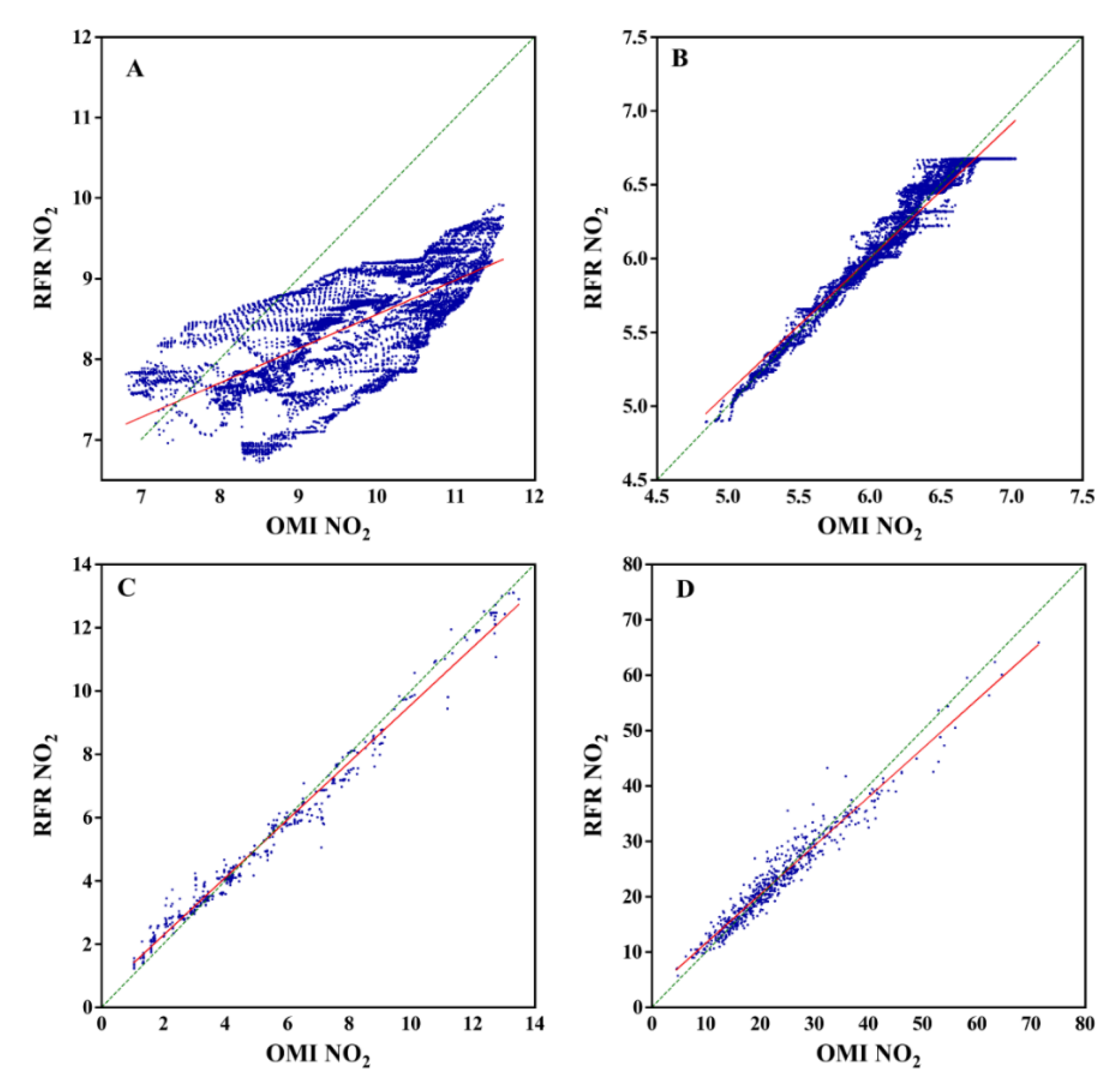

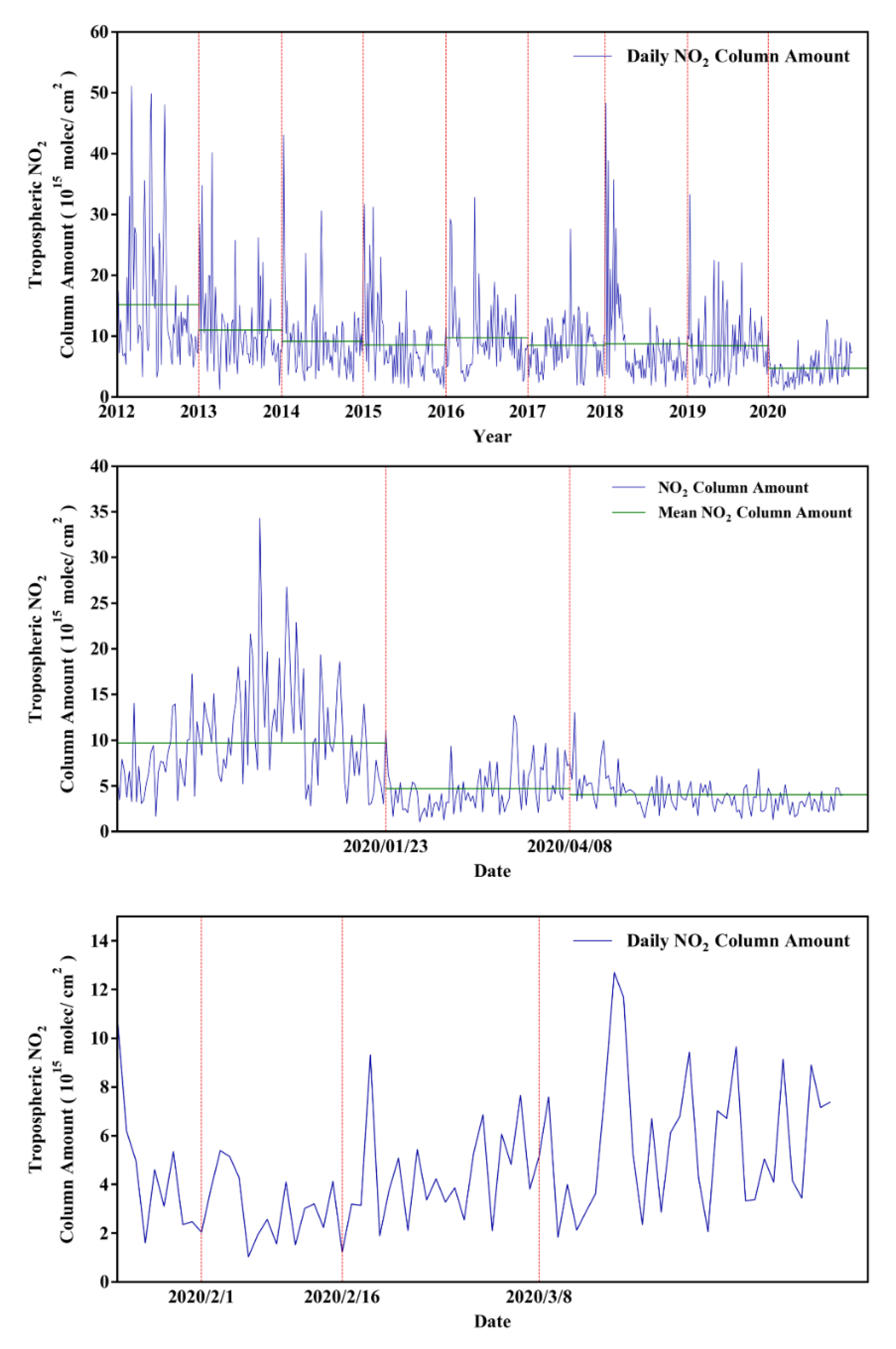
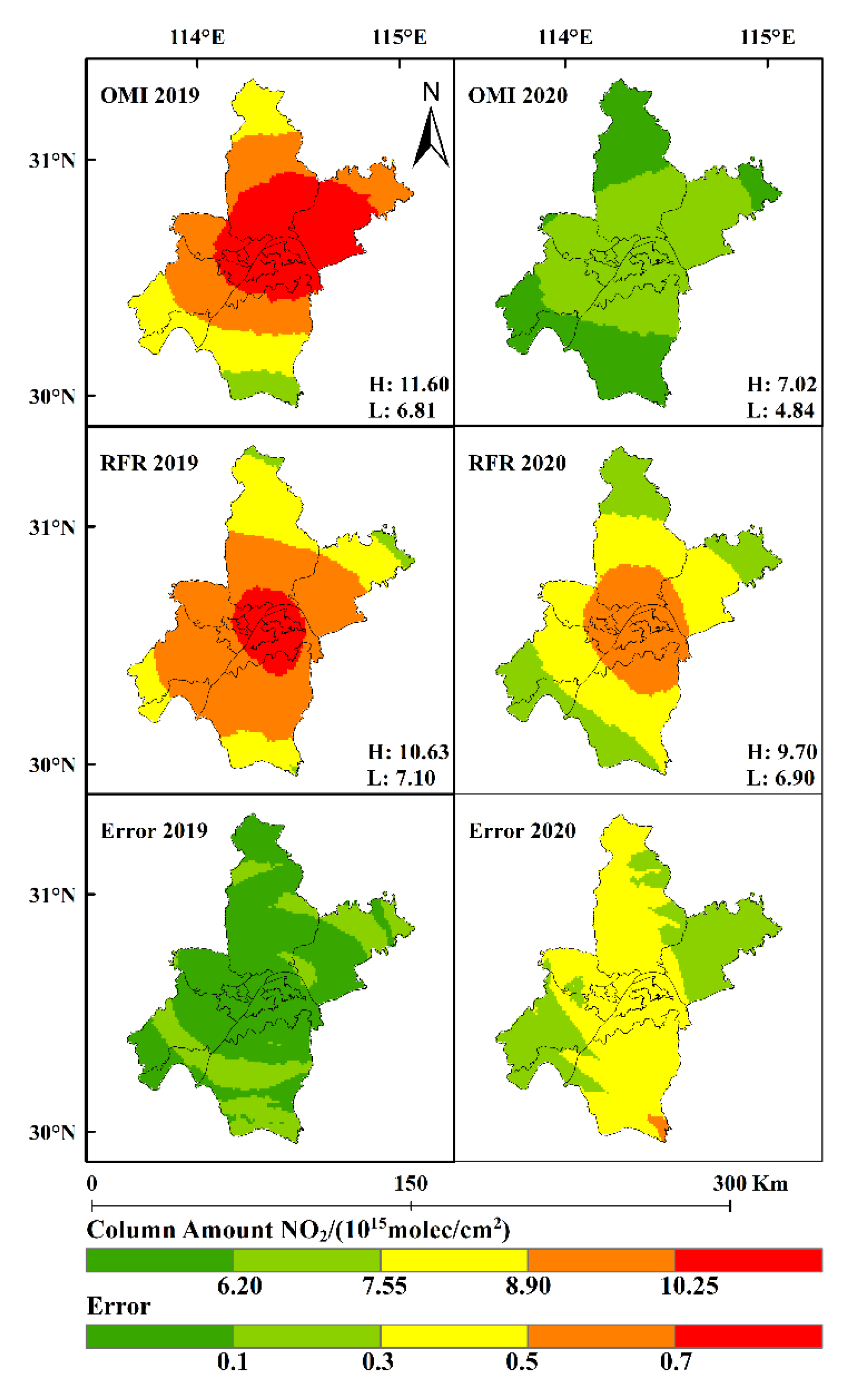
| 1325 A | 1326 A | 1327 A | 1328 A | 1329 A | 1330 A | 1331 A | 1333 A | 1334 A | ||
|---|---|---|---|---|---|---|---|---|---|---|
| 2019 | mean | 35.66 | 50.96 | 48.35 | 54.77 | 48.31 | 42.99 | 52.34 | 49.23 | 24.64 |
| Std | 11.01 | 26.32 | 23.71 | 30.13 | 23.67 | 18.35 | 27.69 | 24.59 | 11.46 | |
| Before | mean | 45.87 | 59.13 | 58.42 | 60.44 | 56.85 | 56.7 | 52.3 | 54.9 | 30.79 |
| Std | 15.08 | 28.34 | 27.63 | 29.65 | 26.06 | 25.92 | 21.51 | 24.11 | 14.97 | |
| 2020 | mean | 19.34 | 19.94 | 26.17 | 24.59 | 24.81 | 24.18 | 24.02 | 19.88 | 10.74 |
| Std | 8.6 | 9.19 | 15.42 | 13.85 | 14.06 | 13.43 | 13.28 | 9.14 | 5.87 | |
| After | mean | 23.64 | 32.82 | 29.03 | 34.99 | 35.90 | 37.11 | 43.95 | 27.21 | 14.35 |
| Std | 8.98 | 12.30 | 9.85 | 12.13 | 13.37 | 12.99 | 17.17 | 11.70 | 7.15 |
Publisher’s Note: MDPI stays neutral with regard to jurisdictional claims in published maps and institutional affiliations. |
© 2022 by the authors. Licensee MDPI, Basel, Switzerland. This article is an open access article distributed under the terms and conditions of the Creative Commons Attribution (CC BY) license (https://creativecommons.org/licenses/by/4.0/).
Share and Cite
Ju, T.; Geng, T.; Li, B.; An, B.; Huang, R.; Fan, J.; Liang, Z.; Duan, J. Impacts of Certain Meteorological Factors on Atmospheric NO2 Concentrations during COVID-19 Lockdown in 2020 in Wuhan, China. Sustainability 2022, 14, 16720. https://doi.org/10.3390/su142416720
Ju T, Geng T, Li B, An B, Huang R, Fan J, Liang Z, Duan J. Impacts of Certain Meteorological Factors on Atmospheric NO2 Concentrations during COVID-19 Lockdown in 2020 in Wuhan, China. Sustainability. 2022; 14(24):16720. https://doi.org/10.3390/su142416720
Chicago/Turabian StyleJu, Tianzhen, Tunyang Geng, Bingnan Li, Bin An, Ruirui Huang, Jiachen Fan, Zhuohong Liang, and Jiale Duan. 2022. "Impacts of Certain Meteorological Factors on Atmospheric NO2 Concentrations during COVID-19 Lockdown in 2020 in Wuhan, China" Sustainability 14, no. 24: 16720. https://doi.org/10.3390/su142416720
APA StyleJu, T., Geng, T., Li, B., An, B., Huang, R., Fan, J., Liang, Z., & Duan, J. (2022). Impacts of Certain Meteorological Factors on Atmospheric NO2 Concentrations during COVID-19 Lockdown in 2020 in Wuhan, China. Sustainability, 14(24), 16720. https://doi.org/10.3390/su142416720






